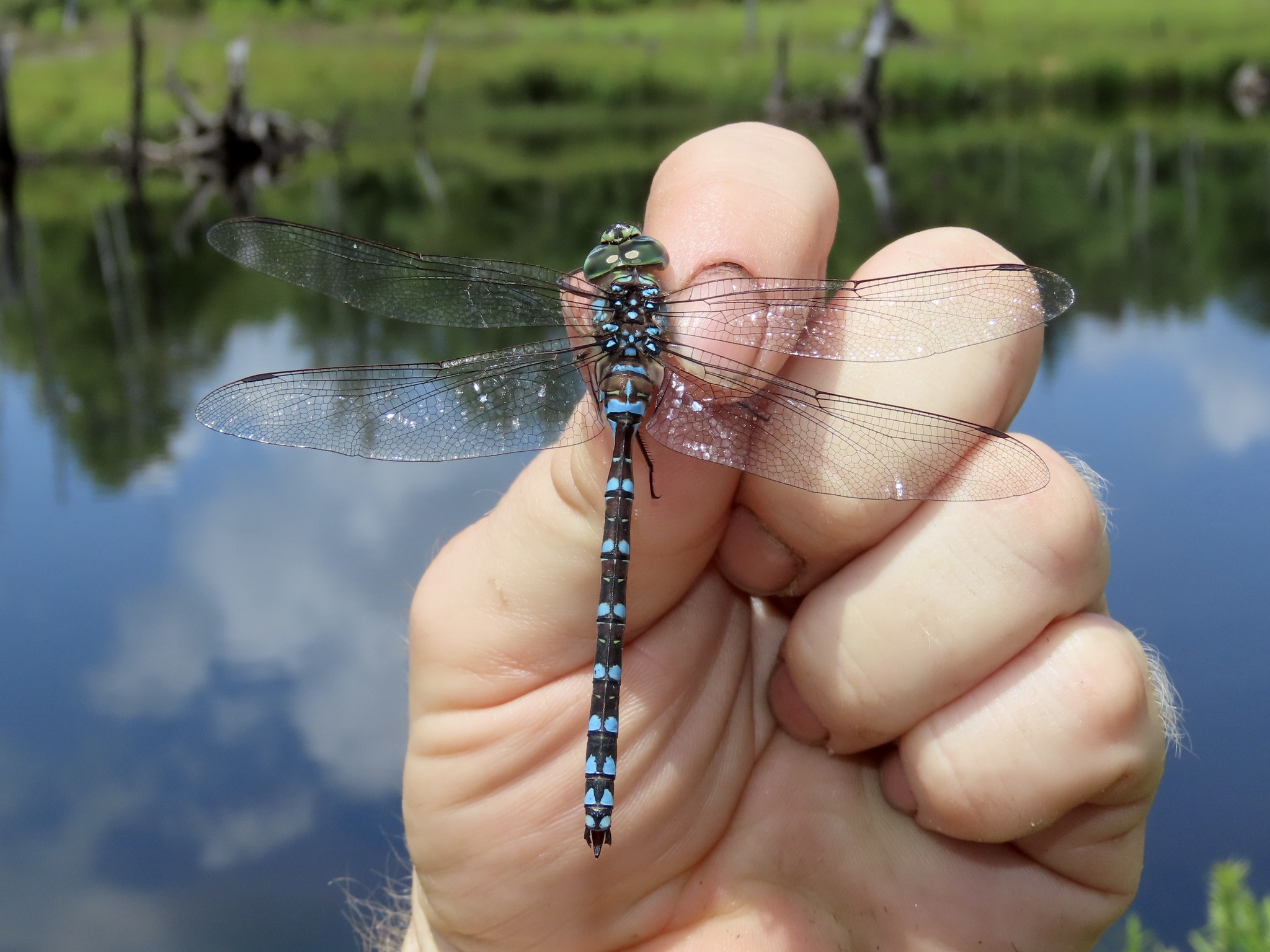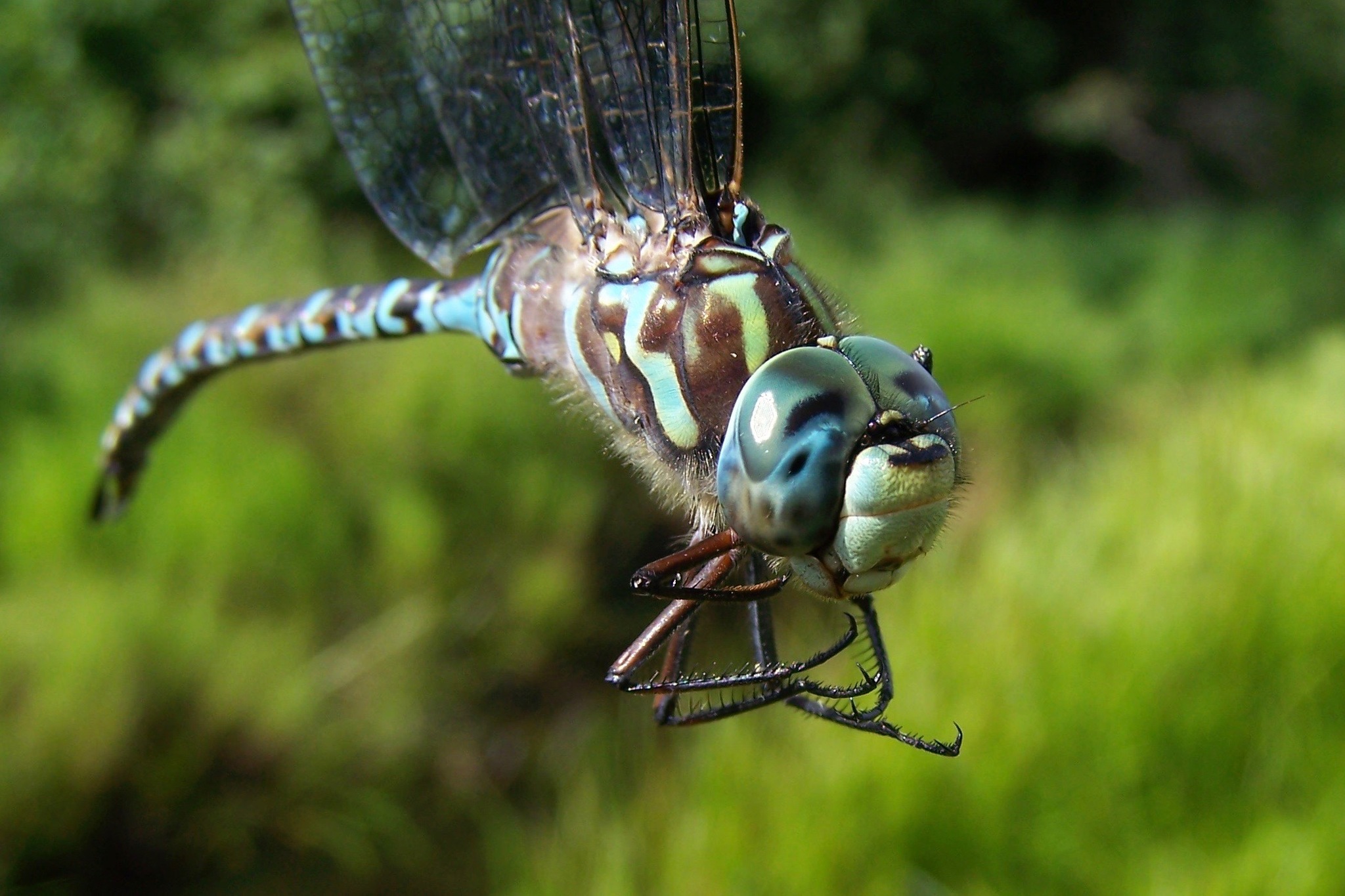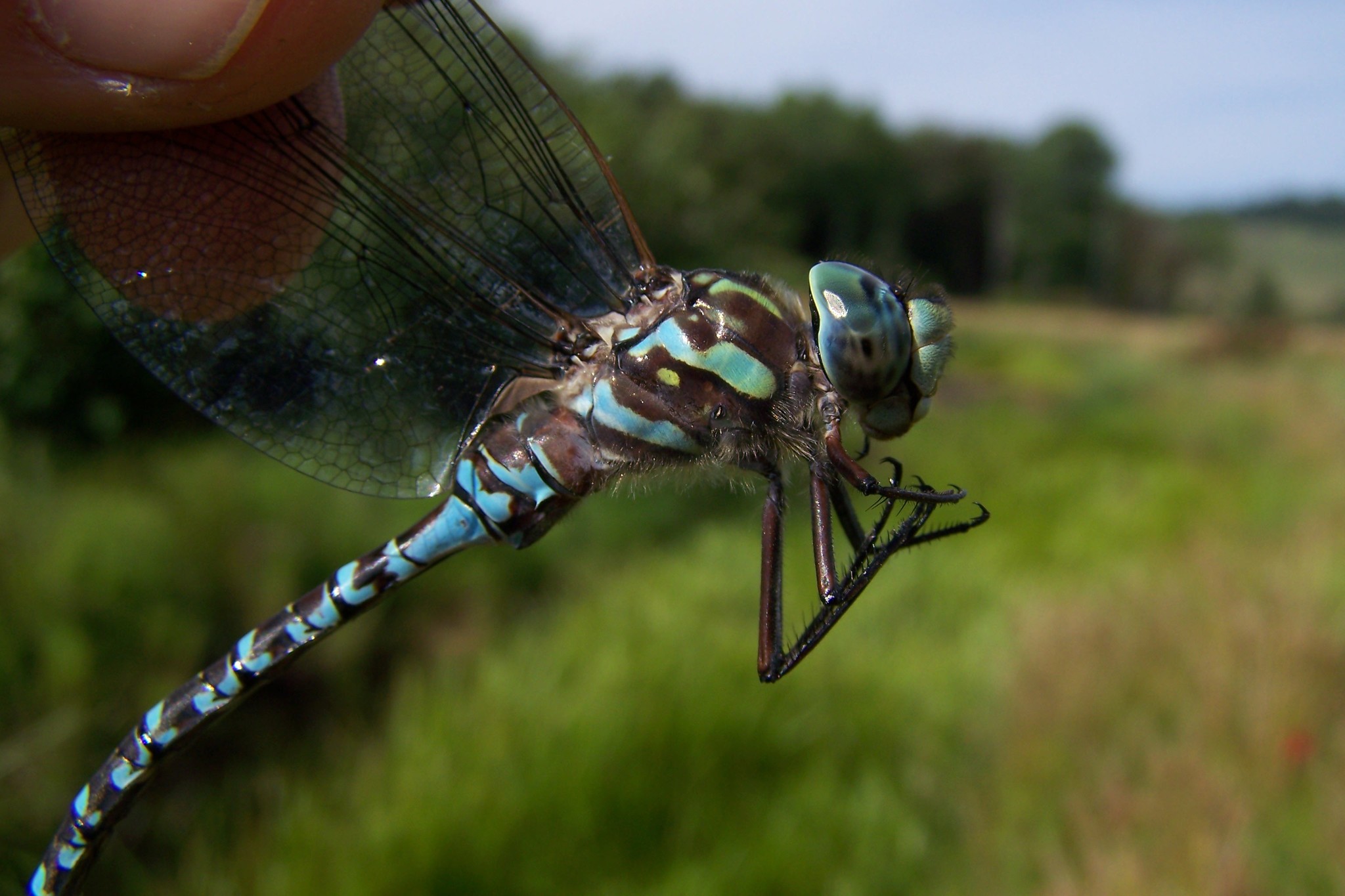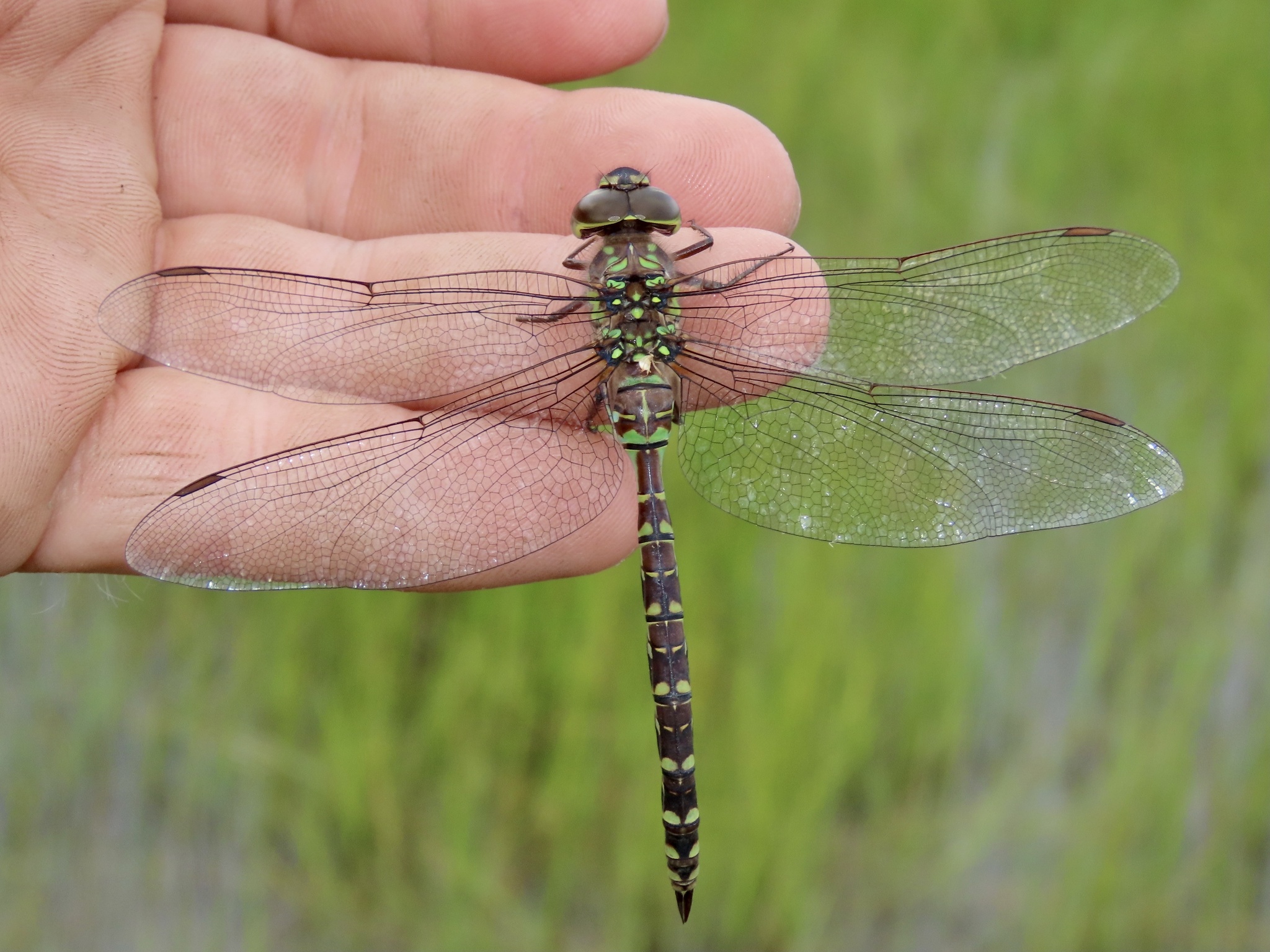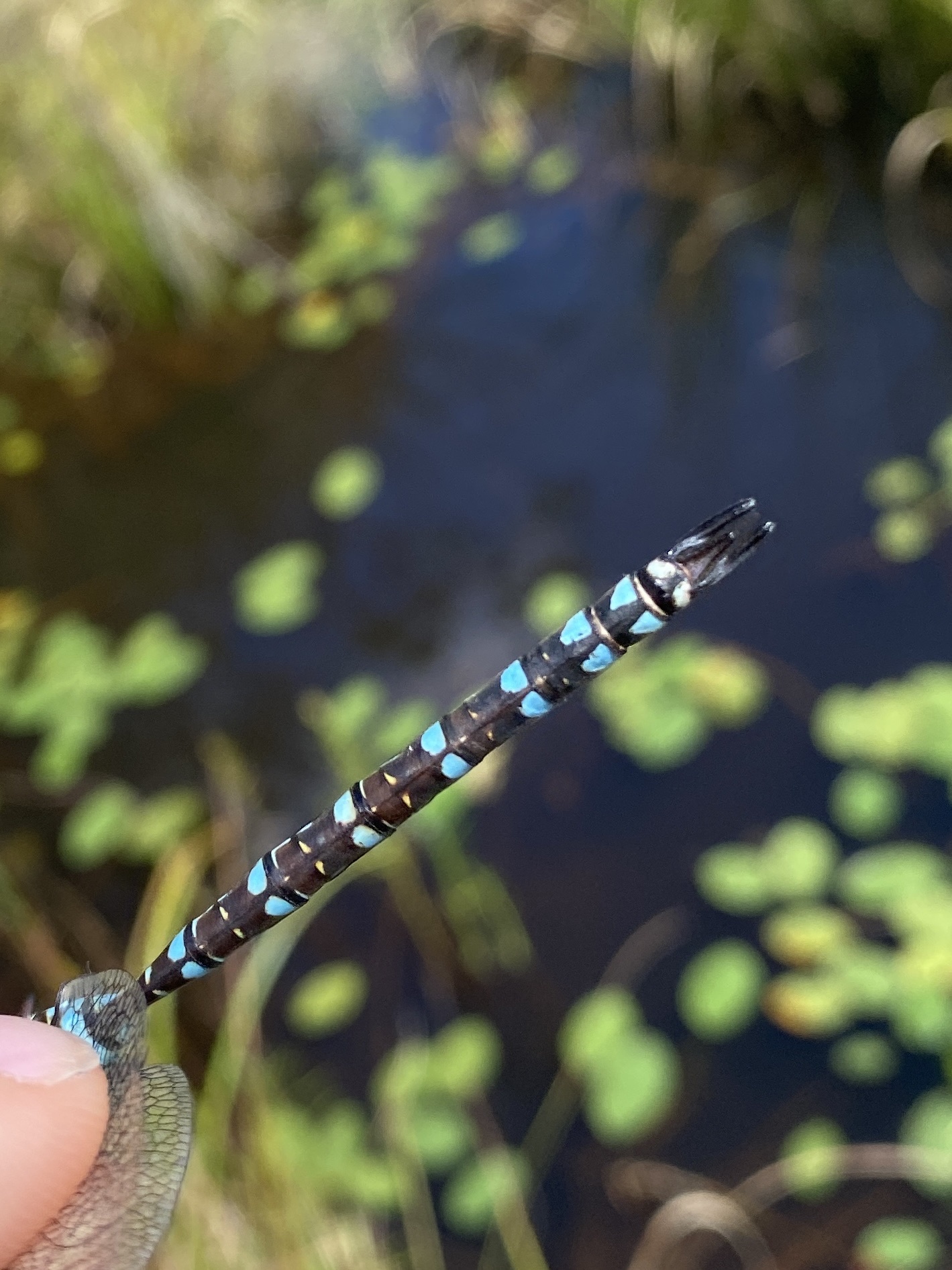Map Snapshot



34 Records
Status
Aeshna canadensis is a widespread northern species near the southern edge of its distribution in the mountains of western Maryland. Currently known only from Garrett County.
Seasonality Snapshot
Source: Wikipedia
| Canada darner | |
|---|---|

| |

| |
| Male (top) and female (bottom) | |
| Scientific classification | |
| Domain: | Eukaryota |
| Kingdom: | Animalia |
| Phylum: | Arthropoda |
| Class: | Insecta |
| Order: | Odonata |
| Infraorder: | Anisoptera |
| Family: | Aeshnidae |
| Genus: | Aeshna |
| Species: | A. canadensis
|
| Binomial name | |
| Aeshna canadensis Walker, 1908
| |

| |
| Range of Aeshna canadensis | |
Aeshna canadensis, the Canada darner, is a species of dragonfly in the family Aeshnidae. It is common throughout southern Canada and the northern United States.[2][3]
Description
[edit]Adult Canada darners, similar to other members of the genus Aeshna, are relatively large, slender dragonflies, and are predominantly dark brown with paler blue or green markings.[4][5] Adults are 64 to 73 mm in total length.[5] The thorax has two vertical stripes on each side, the front with a prominent notch and an extension at the top.[5] The abdomen has spots on most segments.[5] The pale markings are usually blue in males and range from yellow-green to blue in females. The eyes are bluish in males and yellowish or bluish in females.[5] The pale markings may turn gray at colder temperatures.[5]
The green-striped darner is very similar, but is distinguished by minor differences in the shape of the markings and in typically having green thorax stripes.[5] The lake darner is also similar but is larger and has a distinct dark stripe across the face.[5]
Taxonomy
[edit]The Canada darner was first scientifically described in 1908 by Canadian entomologist Edmund Murton Walker, in the same publication as the first descriptions of black-tipped darner, shadow darner, subarctic darner, and variable darner, .[6]
Distribution
[edit]Canada darners are found from Newfoundland and New Jersey in the east to Yukon in the west.[5] Populations extend further south down the Appalachian Mountains to West Virginia and south in mountain ranges to California and Montana.[5][7] There is an isolated population in Nebraska.[5]
Life history
[edit]

Canada darners spend most of their lives as an aquatic nymph.[7] Larvae are typically found in lakes and ponds, especially bog ponds and beaver ponds.[5] Breeding ponds typically have abundant emergent vegetation.[5] An Ontario study found that the species was restricted to ponds with a pH of no more than 6.2.[8] One study found that larvae may spend either one or two winters underwater before emerging.[7]
Adult males fly slowly along the shores of breeding ponds, sometimes dropping to the surface to search for females.[5] Mating occurs in shrubs nearby.[5] Females lay eggs at water level, usually in marshy vegetation away from shore.[5] Breeding adults are most active in sunny weather.[4]

Away from breeding sites, adult Canada darners are often found with other darner species in feeding swarms in clearings and along roadways in early evening.[4][5] Adult Canada darners may be seen from June to October.[5]
Canada darners are often considered to be a common to abundant species where they are found.[4][8][9][7] Although the species has not generally been recognised as migratory, a study in Manitoba and Minnesota found that at least some populations of Canada darners undertake north-south migratory movements within their range.[7]
References
[edit]- ^ Paulson, D.R. (2017). "Aeshna canadensis". IUCN Red List of Threatened Species. 2017: e.T165074A65830832. doi:10.2305/IUCN.UK.2017-3.RLTS.T165074A65830832.en. Retrieved 13 November 2021.
- ^ Dunkle, S.W. (2000). Dragonflies through Binoculars: A Field Guide to Dragonflies of North America. New York: Oxford University Press, p.55.
- ^ Mead, Kurt. (2017). Dragonflies of the North Woods. 3rd edition. Duluth, MN: Kollath+Stensaas, p.34-35.
- ^ a b c d Boole, Marilee S.; Hamrum, Charles L.; Anderson, Myron A. (1974). "The Minnesota Species of Aeshna with Notes on their Habits and Distribution (Odonata: Aeshnidae)". The Great Lakes Entomologist. 7 (1): 19–22.
- ^ a b c d e f g h i j k l m n o p q r Paulson, Dennis (2011). Dragonflies and Damselflies of the East. Princeton, New Jersey: Princeton University Press. ISBN 9780691122823.
- ^ Walker, E. M. (1908). "A Key to the North American Species of Aeshna Found North of Mexico". The Canadian Entomologist. XL (11): 377–391. doi:10.4039/Ent40377-11. S2CID 83905194.
- ^ a b c d e Schilling, Emily Gaenzle; Kardynal, Kevin J.; Kundel, Holly; Crews-Erjaveck, Zephyr; Zobitz, John M.; Hobson, Keith A. (2020). "Phenological and Isotopic Evidence for Migration as life History Strategy in Aeshna canadensis (Family: Aeshnidae) Dragonflies". Ecological Entomology. 46 (2): 209–219. doi:10.1111/een.12953.
- ^ a b Pollard, Bruce J.; Berill, Michael (1992). "The Distribution of Dragonfly Nymphs across a pH Gradient in South-central Ontario Lakes". Canadian Journal of Zoology. 70 (5): 878–885. Bibcode:1992CaJZ...70..878P. doi:10.1139/z92-125.
- ^ Rith-Najarian, J. C. (1998). "The Influence of Forest Vegetation Variables on the Distribution and Diversity of Dragonflies in a Northern Minnesota Landscape: A Preliminary Study (Anisoptera)". Odonatologica. 27 (3): 336–351.
External links
[edit]- Canada darner, NJOdes
- Canada darner, eNature.com
- Canada darner, Talk about Wildlife






